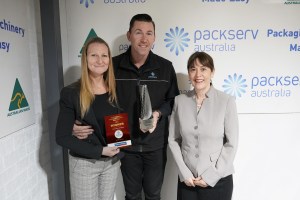The continuing pandemic has fundamentally changed so many things we once took for granted and accelerated certain technologies. Futurist Tony Hunter looks at what this means for the future of food? This article first appeared in the January/February 2022 edition of Food & Drink Business.
In the recently released book Aftershocks and Opportunities 2: Navigating the Next Horizon, my chapter, Five Technologies Shaping the Post-Pandemic Future of Food, looks at the disruptive role of technology, how it advances exponentially, and how it can address flaws in the food system exposed by the pandemic. From this I have developed my TECHXponential concept, exploring this new horizon of food as technology.
The 2020-21 pandemic has irrevocably changed our world. But what could the legacy of the pandemic be for the very future of the food, beverage, and agri-food industries?
Shaping the future
There are many developments shaping the future of food, ranging from natural farming approaches, advances in agricultural science, and precision agriculture, through to technology developments, better use of data analytics, and innovations in food processing.
I want to focus in on the future potential of five critical and exponentially advancing technologies that were already exerting a growing influence on the future of food pre-pandemic: genomics, the microbiome, cellular agriculture, alternative proteins, and synthetic biology.
These could have an even greater impact in the coming years as we seek to tackle issues and risks made starkly apparent during the crisis including hunger and food security, food sovereignty, cost, waste, supply chain vulnerabilities, quality, reliability, environmental impacts, and sustainability.
So, the legitimate question arises as to what were the knock-on effects of the pandemic on these technologies in relation to the future of food?
Looking at the recent signals of change in these technologies suggests that their development continues and that they are still central to the future food agenda. In practice, product sales are surging for alternative proteins and microbiome-based gut health solutions; genomics and synthetic biology are being combined to fight the virus and generate valuable new insights; the cellular agriculture research agenda has been largely unaffected; and venture capital investment in agri-foodtech continues largely unabated.
Despite continuing disruption, these signals suggest that the fundamental long-term trajectory for these technologies in the food, beverage, and agri-food industries remains unchanged or has in some cases been accelerated.
As the world seeks to recover from the pandemic and stabilise food supplies, let’s explore the potential development paths of these emerging technology fields and possible industry impacts over the two to five-year time frame.
When looking at that horizon, the major lesson food manufacturers need to learn from the current crisis is the extreme vulnerability of currently high labour industries during a microbial pandemic. We have seen the conventional meat sector close entire factories, potentially causing major protein shortages.
Thousands of tons of vegetables around the world have been ploughed back into the soil or left to rot due to a lack of labour and hospitality sector disruption.
In the dairy sector, milk was poured down the drain as conventional industries with long lead times and little control on supply were unable to react quickly to market changes.
Automation across the food supply chain, which may have seemed too expensive in 2019, could increasingly look like a good idea in 2022 and beyond.
Vulnerability exposed
Our local and global food systems have been exposed as working well only when there is relative stability of supply and demand, and each element performs perfectly.
The problem is a lack of resilience in times of crisis. Equally importantly, the negative implications of the globalisation of the food supply chain are now becoming obvious. These vulnerabilities include susceptibility to transport disruptions, and a lack of labour to pick, process, and manufacture basic foods.
Additionally, some countries temporarily banned the export of staples like wheat, soybeans, flour, sugar, and potatoes. What that means, is the perceived advantage of the five technologies above is that they do not suffer from these constraints and are far more agile in adapting to short lead time changes.
Food production has long been tied to the availability of arable land and fresh water. Those countries that have them have food security; those that don’t are at the mercy of those that do.
These and other factors have dramatic implications for the short – and long-term food sovereignty of many countries and the global, equitable distribution of food.
De-coupling food from this tyranny of arable land and available water would enable many countries to avoid supply issues and attain a high level of self-sufficiency and food security. Until recently, this has been an impossibility; however, technologies such as those discussed here can now change this seemingly fundamental basis of food production.
The technologists’ argument is that developing and even developed countries have no need to continue to pursue only conventional technologies.
The hope is that we can increasingly isolate our food supply from the trans-border impacts of pandemics and reimagine our food system to use non-arable land and even salt water to produce food and food ingredients.
By pursuing a portfolio of developments drawn from these five core technologies such as cultivated meat, algae, and synthetic biology, countries can establish a whole new food system and achieve greater individual food self-sufficiency and security.
The next questions are will these new technologies lead to amore sustainable and equitable food system and can countries achieve increased food security?
Aftershocks and Opportunities 2 can be bought at www.fastfuture.com. Enter the code TH25AO2 for a 25% discount.






